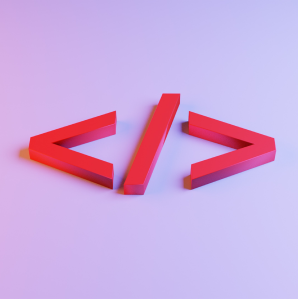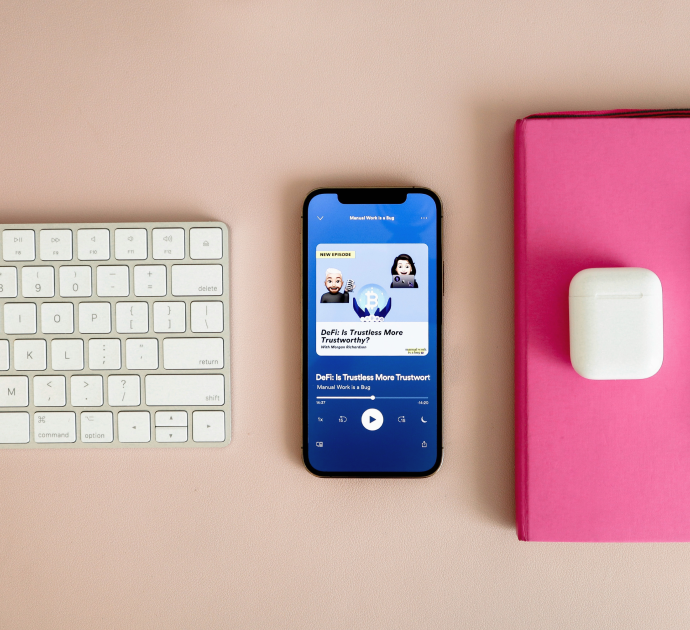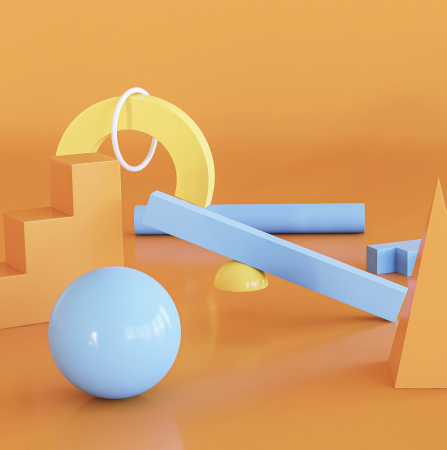Working on the development of a digital product? Great! We do the same every day at Fulcrum! Hence, we can gladly share our tips and tricks on how to get on with it 🙂
In this article, we will touch on a product vision and a product vision workshop. This couple is a springboard for the successful development of the product. Further, you will understand why and how to use it to ensure maximum success.
We are excited, you are excited – let’s go!
What are product vision and a vision workshop
A product vision is a hot button of project management. It describes the essence of the product. It answers the foreground questions:
- What is the product?
- What problems does it solve?
- Who are its customers?
- What is going to be achieved with the product?
- It’s like the North Star, a lighthouse for a vessel.
Forming a product vision is a part of the Discovery stage. It gives more context about the product from the parties involved. We understand what the product is about, what are its goals, and its users. This information is a basis for our future work. It gives an understanding of the business goals. This, in turn, helps to work with stakeholders’ expectations, organize our workflow. Keeping in mind business needs, project management can contribute to product development. A product vision turns on the light in the darkroom and shows the way.
That’s why the Discovery stage is not a drop in the bucket.
A vision workshop is an instrument to get this priceless information. At Fulcrum, it’s a 2-hour interactive session with stakeholders. The deliverable is forming a common vision of the project. We define what success is in this case and how to achieve it.
Why do a vision workshop
- to process different visions of stakeholders & spell out a common vision;
- to define expectations;
- to figure out where the project goes & how to get there;
- to get prepared for future feature prioritization;
- to create a clear strategy/more focused roadmap;
- to speed up the transition from planning to implementation
A vision workshop is crucial for effective teamwork. Usually, an interdisciplinary team works on a project. It consists of designers, frontend and backend developers, testers, marketing specialists. It’s cool when common ground prevails. A vision workshop contributes to it. Every member learns each other’s expectations and shares ideas, remarks, suggestions, and concerns. A project manager can make sure that everyone understands the business idea behind the project. That’s how real teamwork begins.
Last but not least. A summary of the workshop will help to:
- lock the results of the discussion & come back to them if needed. It’s always useful to refresh information in the head;
- to swiftly fill in a new team member.
In other words, a vision workshop is the basis of the Discovery stage and the future work of the team.
Agenda: what does a vision workshop look like
An agenda is a cooperative work. It’s definitely not the responsibility of a single person. It’s a common task of several stakeholders.
The planning of the agenda is organized around two main questions:
- Why will we meet?
- What results of the workshop do we want to achieve?
Why is the vision workshop agenda important
Planning agenda is an opportunity to involve all team members in the process. It’s powerful brainstorm. Everyone shares ideas on the agenda stages. In a perfect world 🙂
But really. It’s a chance to spend time with all team members productively. Most likely, it’s gonna be a while for the whole team to meet together again. So, use this time to your advantage!
An agenda at Fulcrum usually lasts for about 2 hours. Sometimes less. It consists of:
Intro – 15 mins. All members present themselves and the company, explain their roles. The moderator spells out the workshop goal and its agenda. The main question is answered: Why are we here?
Explanation of the process – 15 mins. The moderator explains the procedure. He tells how to work with the main instrument – canvases (read more about it further). What blocks to fill-in? What information to include?
Individual writing – 30 mins. Time for each member to fill in the canvases. For example:
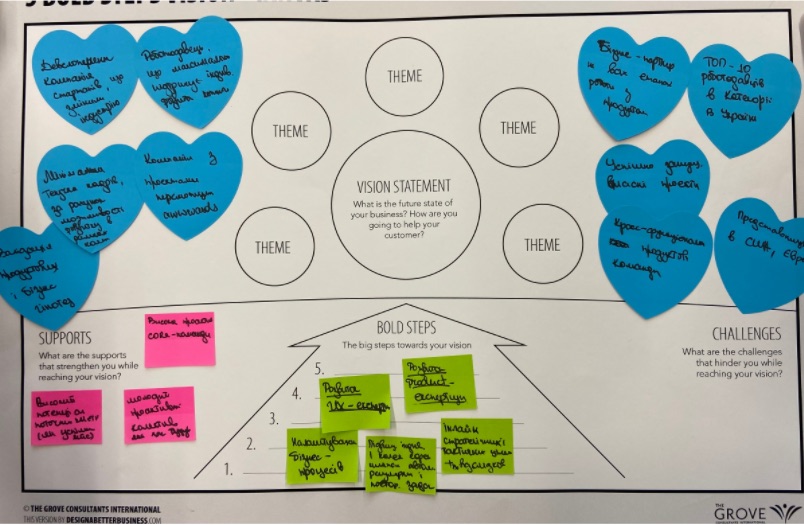
Individual presentation (after a short break) – 5-7 mins for each person. Time for each team member to present the ideas, comments, suggestions, and their value. The idea might be cool but why should we do it? How will the project benefit from it?
Common vision – 30 mins. The magic begins here. First, we collect and discuss similar stickers. They are the basis for the common vision. Then, we decide what to implement and in what order. Finally, the stakeholders create a common vision statement:
“Who .. what are doing .. why .. for whom”
Backstage of the vision workshop at Fulcrum:
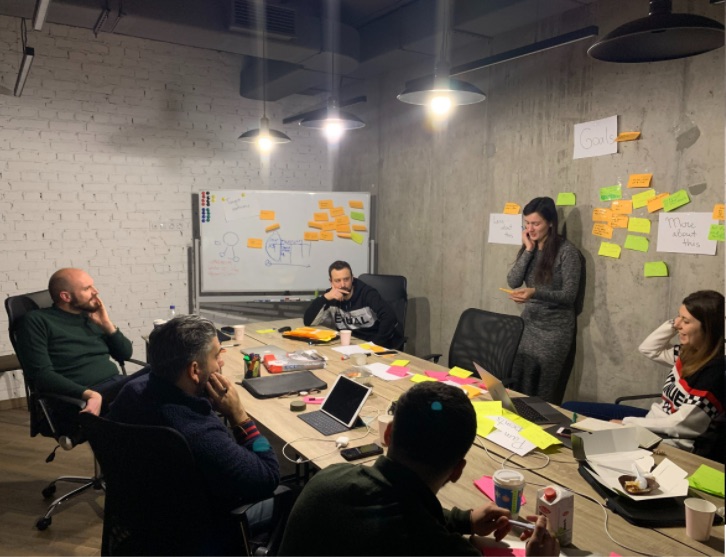
Instruments for online and offline visual workshops
Now, you know what a vision workshop is. Time to figure out how to do the trick. Here is a set of instruments that we use at Fulcrum.
First and foremost – 5 Bold Step Canvas
This tool was created by David Sibbet, a founder of The Grove Consultants International. In a simple word, it helps to define a common goal and concrete steps to reach it. It has blocks that help to form a common vision, spell out supports, challenges, values, and actions. Let’s have a closer look:
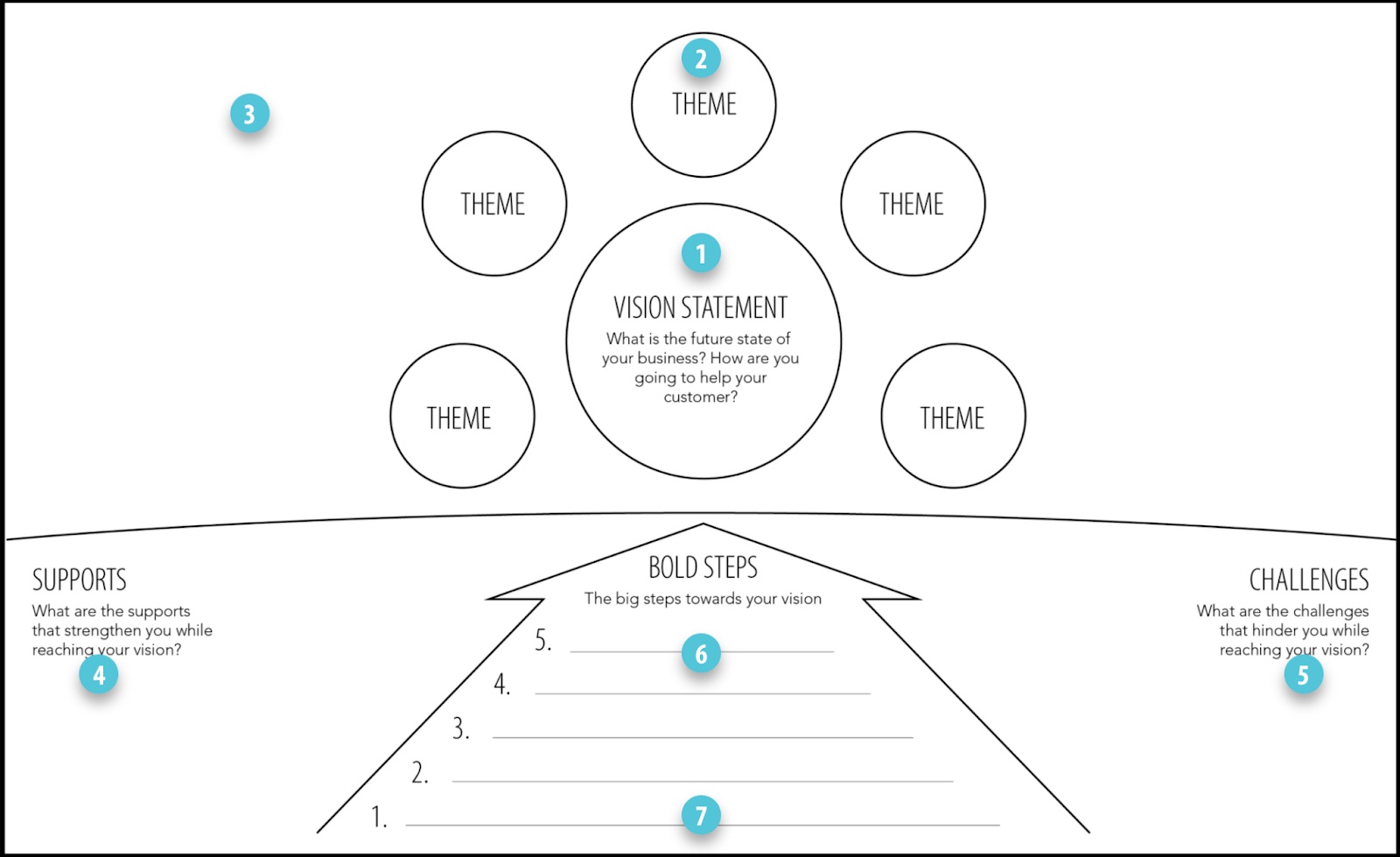
Here:
The vision statement answers the questions: Who we are? Where are we going? Who are our customers and how will we help them?
Important themes (3 to 5) that support the vision. For example, an employer, who supports the individual development of each member. Or cross-functionality of the products. Or a minimal staff turnover because of an opportunity to express oneself in different roles. We talk about small and big things that contribute to the common vision.
How will the themes appear in the company? How can we make the vision themes specific? How will they inspire others?
Supports or things that will help to achieve the goal.
Challenges or things that can hamper success.
5 Bold Steps – actions that will help to achieve the vision.
The main advantages of this instrument are:
- defining the goal – where we want to be in X days, months, years;
- deciding on concrete steps to achieve this vision;
- getting inspiration.
How to fill in canvases?
The process of filling out canvases is a snap at Fulcrum. The moderator always goes over its stages though:
- Every team member fills in individual canvases & describes a vision from their perspective.
- A common vision of the Fulcrum team is produced.
- Each stakeholder outlines their own vision.
- A moderator generates a common vision of all stakeholders.
- A very common vision (Fulcrum + stakeholders) is generated. Bingo-bango, we are done!
Session plan of the Buff vision workshop
Here is an example of the vision workshop of the Buff project.
Individual preparation
Both stakeholders and a Fulcrum team fill in individual canvases.
Meeting agenda (a 1-hour call)
- 5 mins – Intro
- 15 mins – Presentation from the client-side
- 15 mins – Presentation from the Fulcrum side
- 15 mins – Discussion of the common vision & bold steps
- 5 mins – Discussion of the next steps
Next steps
- Prioritization of the next actions.
- Implementation of the vision for prioritization, features discussions.
What to do if you hold a workshop online
For online workshops, we use Miro – an online visual collaborative platform. They have a cool online whiteboard. A moderator adds a board for each member and gives access to everyone. Alongside, he creates a board for the common vision and fills it during the workshop.
Here is how it looks like:
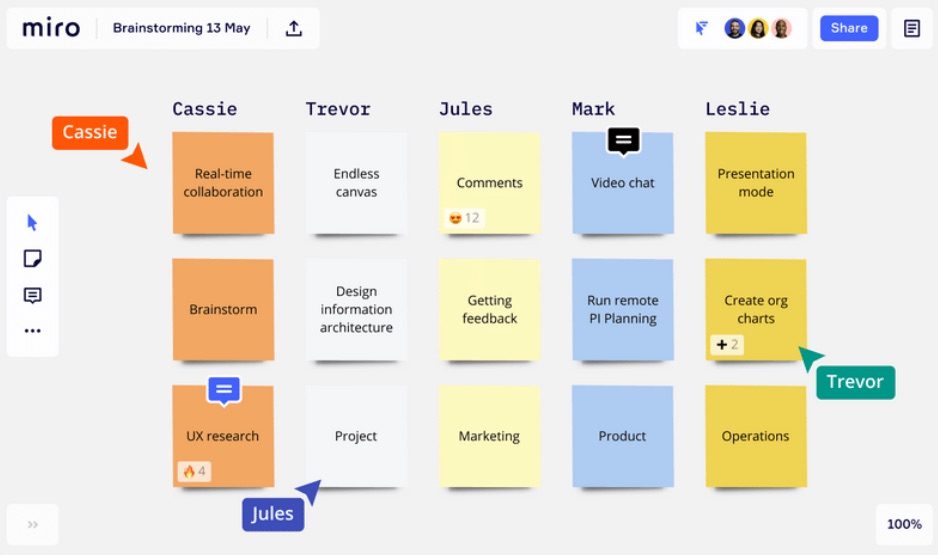
A few more final words
A vision workshop is neither the panacea from failures nor a guarantee for success. Still, it’s a prerequisite for a smooth development start. It gathers the key players and the key information is shared and discussed. It’s a chance to make sure that everyone understands their roles, responsibilities, scope, and the project’s goal.
Thorough research of the product is a basis of the work at Fulcrum. As a result, we get a well-defined product vision. It helps to keep up the project in the right direction. We are proud of our client-oriented approach and will gladly help you with your project.

FAQ: Vision Workshop
-
How to host a vision board workshop?First and foremost think about the goal and the agenda of the workshop. Choose the instruments that will help to hold it efficiently (e.g. 5 Bold Canvas). Decide on the participants. Choose the place. Pick up the supplies (whiteboards, pens, markers, stickers, paper). In the case of an online workshop, think about the platform and online instruments. Invite the participants and in a nutshell, explain what you are going to do.
-
How much to charge for a vision board workshop?It depends. The cost will differ depending on the materials (canvases, boards, pens, scissors, etc.), space (if you rent it), food & drinks, decor. It also depends on the number of participants. Therefore, it will cost as much as your needs.
-
How to facilitate a vision board workshop?The first thing to do is to explain to participants “what”, “why”, and “how”. “What” is spelling out a common vision. “Why” is to understand what the goal is and how to achieve it. “How” is a 1-hour workshop with a certain agenda. Then, launch a process. It depends on what approach you chose. At Fulcrum, we use 5 Bold Canvas. So, the process lies in filling them in and discussing the results. In the end, formulate a common vision and discuss suggestions and remarks.
